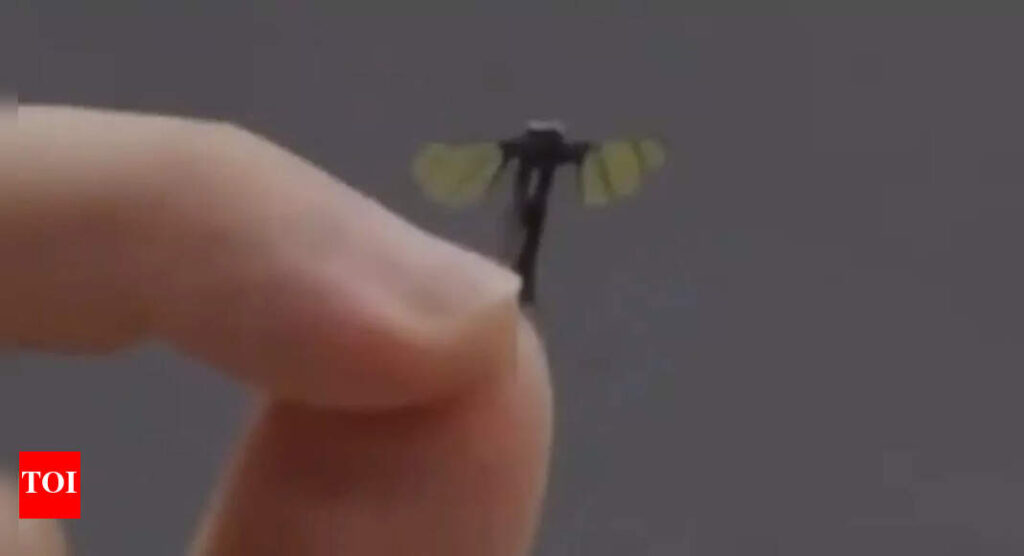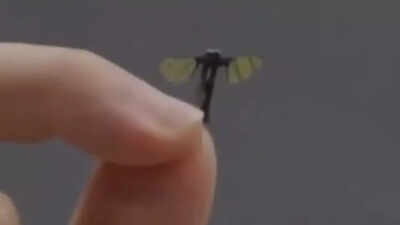China unveils mosquito-sized spy drone designed for covert military operations |

China has introduced a drone as small as a mosquito, marking a significant step forward in surveillance and covert technology. Developed by scientists at the National University of Defense Technology (NUDT) in Hunan province, the micro aerial vehicle is engineered to mimic a mosquito’s form, with leaf-like wings, thin legs, and a vertical black fuselage.Demonstration footage aired on Chinese state broadcaster CCTV shows the device perching lightly on a student’s fingertip, underscoring its diminutive size and potential stealth. In the video, Liang Hexiang, an NUDT student involved in the project, describes it as a “mosquito-like robot type” suitable for battlefield reconnaissance and special tasks.
What the drone actually is
- The drone measures around 1–2 cm in length, weighing approximately 0.3 grams.
- It has two transparent wings that flap in a motion resembling insect flight, and three slender legs enhancing its mosquito-like appearance.
- Its design allows it to rest on human skin or fingertips, as shown in the demonstration.
The drone was developed as part of NUDT’s research into micro flapping-wing aerial vehicles, a field with significant military interest due to its potential for discreet surveillance.
Technical realities and limitations
While headlines have framed the drone as a near-future espionage tool, there are crucial constraints:
- Battery life: Such micro drones have extremely limited power, often only sufficient for brief indoor flights.
- Payload limitations: Fitting functional cameras, microphones, or communication interceptors remains a major engineering challenge due to weight and energy constraints.
- Control stability: Outdoor use is impractical at this stage, as even mild wind can destabilise the drone. Current tests are confined to controlled indoor environments.
Speculation about operational use
Some reports and online commentary suggest these drones could be deployed in swarms for battlefield saturation or mass espionage. However, there is no evidence that the showcased prototype has been operationally deployed or integrated into swarm systems. China, like the US, is actively researching drone swarm technologies, but these involve larger drones capable of carrying sensors and maintaining stable communication. At present, mosquito-sized drones remain experimental laboratory prototypes rather than field-ready assets.
Broader implications
Despite its limitations, the mosquito drone highlights a future where surveillance tools will shrink to nearly invisible scales. This raises significant ethical and security concerns:
- Military reconnaissance: Micro drones could infiltrate areas unreachable by conventional devices.
- Civilian misuse: There is potential for spying on political leaders, activists, or corporate meetings.
- Privacy erosion: The ability to gather information without detection challenges current legal and ethical frameworks governing surveillance.
Experts warn that as such technologies mature, traditional security systems may be inadequate to detect or defend against micro-scale surveillance, requiring new countermeasures and international norms.
The road ahead
China’s mosquito-sized drone joins global micro aerial vehicle research efforts, such as DARPA’s RoboBee in the United States and insect-inspired drones at other Chinese universities. While the current NUDT prototype remains a lab demonstration, it is a glimpse into a future where spycraft, warfare, and intelligence gathering are measured not in missiles and tanks, but in millimetres and milligrams.








